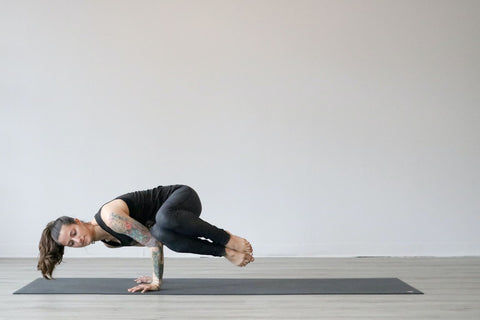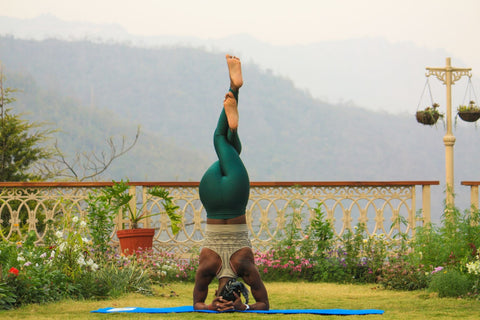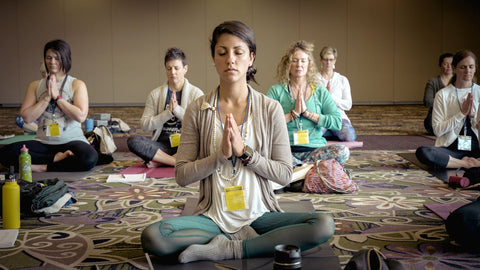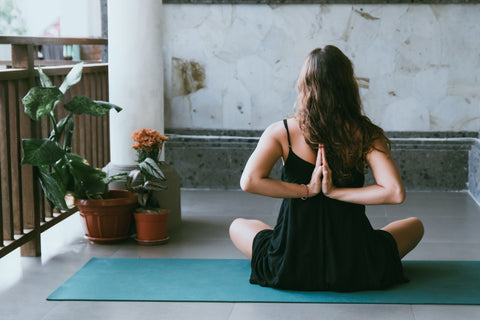
One of the most popular forms of yoga today is Bikram yoga, a system of yoga developed by Bikram Choudhury synthesizing the techniques of traditional “hatha” yoga. So many dedicated yogis are passionate to the Bikram practice.
Choudhury developed the practice of Bikram Yoga in the 1970s, selecting classic hatha yoga poses designed to “systematically move fresh, oxygenated blood to 100 percent of your body, to each organ and fiber.” Choudhury is the ultimate yogi guru, claiming to have started when he was 4 years old and practicing 4-6 hours a day. Whether or not this is true, Choudhury has inspired millions to challenge themselves in new ways with Bikram Yoga.
The Features of Bikram Yoga
The practice of Bikram yoga involves repeating the same 26 poses and two breathing exercises in a series of cycles over the course of a ninety minute class. Bikram yoga instructors must undergo nine weeks of training to learn the set practice and dialogue; in Bikram classes, instructors don’t demonstrate poses but talk you through the flow of a moving meditation. The poses are developed from common hatha yoga poses, including tree pose, eagle pose, triangle pose, and cobra pose--they must be executed in a specific, unvarying order to maximize their benefits and fulfill the goals of the Bikram practice.

Eagle pose
The practice also makes use of the 80-20 and exhalation breathing methods. The 80-20 method is defined by taking a full breath before assuming the pose and then exhaling 20 percent of the air through the nose continuously while in the pose. The exhalation method involves taking a full breath and then exhaling completely once you assume the pose, and then continuing to exhale after that. Both methods are difficult and not recommended for beginners.
The most notable feature of Bikram yoga is the temperature of the room. Also known as “hot yoga,” Bikram practice is defined by its heated room, with temperatures often set to 105 degrees Fahrenheit, and high humidity (typically rooms hover at about forty percent). Keep in mind that “hot yoga” and Bikram yoga are not always the same thing! “Hot Yoga” can refer to any heated room where yoga is practiced, while Bikram yoga is defined by its extreme temperatures. Its own creator, Choudhury, described the rooms for his practice as “torture chambers.” Because of this, Bikram yoga does not include inverted poses, such as headstands, common to other yoga practices due to the dangers of lightheadedness.

Stretching during Bikram Yoga
The Potential Benefits of Bikram Yoga
The health benefits and risks of Bikram yoga have been widely disputed. The official Bikram yoga site claims, “these 26 postures systematically work every part of the body, to give all the internal organs, all the veins, all the ligaments, and all the muscles everything they need to maintain optimum health and maximum function. Each component takes care of something different in the body, and yet they all work together synergistically, contributing to the success of every other one, and extending its benefits.” Many also claim that the practice and profuse sweating helps them to flush toxins from the body and lose weight. Practitioners also claim that it improves blood flow and flexibility by increasing the oxygen flow to the body.
While other studies have shown that yoga in general can reduce blood pressure, improve brain power and mood, and help back pain, no large scale research has been conducted about the specific benefits of Bikram yoga. Flushing toxins is not typically done via sweating, but rather by the liver and kidneys, but it’s undeniable that practitioners cite many benefits and feeling improved health and flexibility. However, dehydration and fainting can result from the practice because of the high temperatures in the room--be sure to hydrate and listen to your body if you choose to engage in the practice. Additionally, it is not recommended that those with high blood pressure, diabetes, and heart conditions participate because of the health risks induced by the high temperatures.
Bikram yoga is a unique and rewarding practice provided you educate yourself about its risks and prepare to cope with its high temperature.






